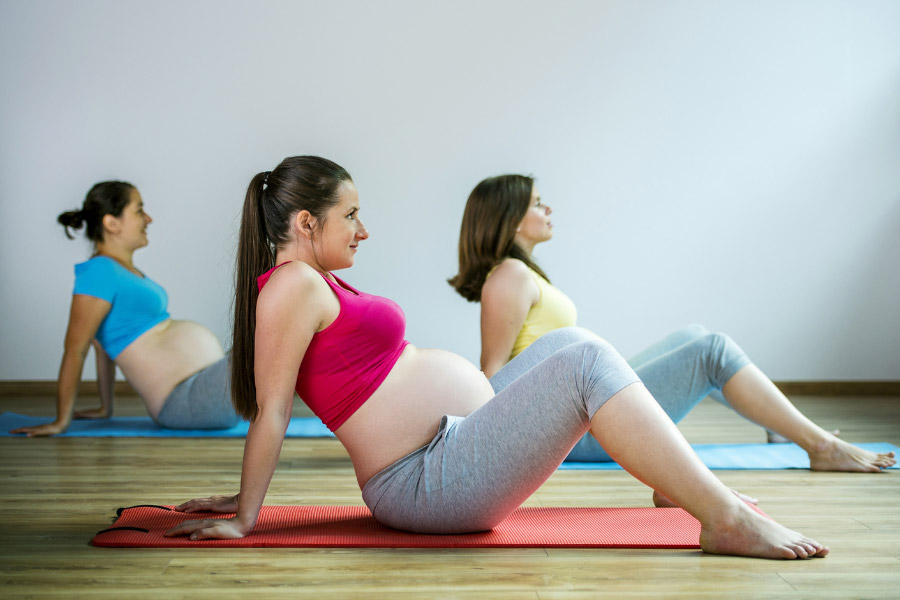It was Women’s Health Week last month and so to celebrate let’s discuss the benefits of exercise for women during pregnancy.
Pregnancy is an amazing time of a woman’s life, and truly shows what a woman’s body can do when bringing another life into the world. However, many women during this time are not sure if they should continue to exercise.
Benefits
There are many benefits of exercise during pregnancy, and these may include:
- Managing gestational diabetes and lowering glucose/sugar levels which reduces the likelihood of insulin in the later stages of pregnancy
- Improving blood flow and circulation to the placenta
- Decrease the duration of labour
- Reduce the risk of Caesarean section and operative-assisted vaginal delivery needing to be performed
- Reduce pregnancy discomforts, i.e. backache and lower extremity oedema
Generally, exercise is also associated with improved mood and reducing depressive symptoms in those with clinical depression.
Where to start
Regardless of wehther you are already exercising or have never exercised in your life, you will need to consult your doctor and have your risk level assessed to determine whether it is safe for you to continue to exercise or start exercising.
If your pregnancy is medically classified as ‘normal’ and you receive clearance to continue or begin exercising, moderate exercise is recommended of at least 30-minutes a day and at least 5 days a week is recommended OR at least 150-minutes a week. The aim is to have your heart rate sitting between 50%-75% of your age-predicted maximum.
Types of exercise
Moderate exercise can include:
- Aerobic exercise such as brisk walking, treadmill, bicycling, stair climbing, vacuuming, dance classes, swimming and gardening
- Water exercise
- Exercise classes
- Progressive resistance muscle strengthening
- Pelvic floor exercises
- Lumbar stabilisation and stretching exercises
- Yoga
- Qigong
- Tai chi
- Relaxation
One way of getting some exercise in can be a simple 30-minute walk with your partner, family member or friend.
Physical training is considered safe for those who were undertaking this form of exercise previously and have a normal pregnancy.
Things to keep in mind
Precautions that need to be taken for the protection of yourself and your foetus:
- Exercise in a supine position after the 1st trimester
- Motionless and/or prolonged standing
- Recreational sports with a high potential for contact
- Activities with an increased risk of falling
- Scuba diving
Exercise should be ceased and medical revision should be undertaken if you experience any of the following:
- Vaginal bleeding
- Dyspnea before exertion
- Dizziness
- Headache
- Chest pain
- Muscle weakness
- Calf pain or swelling
- Pre-term labour
- Decreased foetal movement
- Amniotic fluid leakage
Overall, if your pregnancy is classified as normal by a doctor, it is safe to continue exercising or start exercising and is considered essential to a healthy pregnancy. If you are unsure, then please speak to your doctor or one of our experienced practitioners.
If you are feeling a little lost on where to continue or begin exercising during your pregnancy, book an appointment today with one of our team.
References
Barretto, J. R. (2022). Benefits of Exercise in Pregnant Women Dominican University of California. https://doi.org/10.33015/dominican.edu/2022.NURS.ST.17
Brown, W. J., Hayman, M., Haakstad, L. A. H., Lamerton, T., Mena, G. P., Green, A., Keating, S. E., Gomes, G. A. O., Coombes, J. S., & Mielke, G. I. (2022). Australian guidelines for physical activity in pregnancy and postpartum. J Sci Med Sport, 25(6), 511-519. https://doi.org/10.1016/j.jsams.2022.03.008
Budler, L. C., & Budler, M. (2022). Physical activity during pregnancy: a systematic review for the assessment of current evidence with future recommendations. BMC Sports Science, Medicine and Rehabilitation, 14(1), 133. https://doi.org/10.1186/s13102-022-00524-z
Hayman, M., Brown, W. J., Brinson, A., Budzynski-Seymour, E., Bruce, T., & Evenson, K. R. (2023). Public health guidelines for physical activity during pregnancy from around the world: a scoping review. British Journal of Sports Medicine, 57(14), 940-947. https://doi.org/10.1136/bjsports-2022-105777
Hinman, S. K., Smith, K. B., Quillen, D. M., & Smith, M. S. (2015). Exercise in Pregnancy: A Clinical Review. Sports Health, 7(6), 527-531. https://doi.org/10.1177/1941738115599358
Jarski, R. W., & Trippett, D. L. (1990). The risks and benefits of exercise during pregnancy. The Journal of Family Practice, 30(2), 185-189. https://pubmed.ncbi.nlm.nih.gov/2405095/
Mudd, L. M., Owe, K. M., Mottola, M. F., & Pivarnik, J. M. (2013). Health benefits of physical activity during pregnancy: an international perspective. Medicine & Science in Sports & Exercise, 45(2), 268-277. https://doi.org/10.1249/MSS.0b013e31826cebcb
Prather, H., Spitznagle, T., & Hunt, D. (2012). Benefits of Exercise During Pregnancy. PM&R, 4(11), 845-850. https://doi.org/https://doi.org/10.1016/j.pmrj.2012.07.012
Wadsworth, P. (2007). The Benefits of Exercise in Pregnancy. The Journal for Nurse Practitioners, 3(5), 333-339. https://doi.org/10.1016/j.nurpra.2007.03.002

